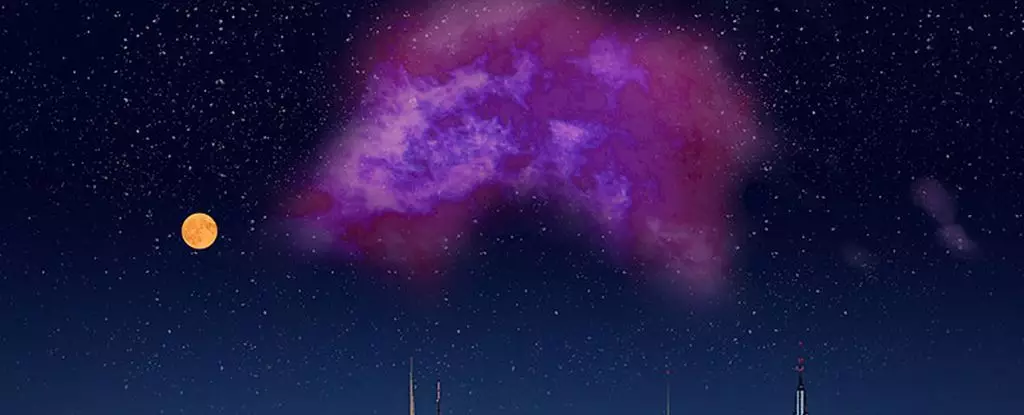In a groundbreaking revelation, astronomers have identified a massive, crescent-shaped cloud of molecular hydrogen lurking just 300 light-years away from our Solar System. Named Eos, after the Greek goddess of dawn, this discovery marks a significant leap in our understanding of interstellar materials. The identification of Eos relied on the innovative use of far-ultraviolet light to detect molecular hydrogen, a technique that has never been applied before in the hunt for interstellar material. This celestial revelation invites both awe and curiosity as it unravels the complexities of the universe.
Unmasking the Invisible
For too long, the vastness of interstellar space has been perceived as a void between the luminous bodies we see in the night sky. Yet, it holds a treasure trove of molecular material essential for star formation. The findings surrounding Eos emphasize that these hidden giants of space are not merely figments of theories; they are real entities influencing the genesis of stars and planets. Traditional methods of studying molecular clouds often relied heavily on carbon monoxide observations. However, as astrophysicist Blakesley Burkhart insightfully noted, many molecular clouds contain few trace elements of carbon monoxide, thus evading conventional detection methods. The discovery of Eos exemplifies the necessity for innovative techniques in understanding our universe.
A Breakthrough in Technique
Eos’s identification was made possible through meticulous analysis of data from South Korea’s STSat-1 ultraviolet space telescope. This mission focused on molecular hydrogen, which constitutes approximately 90% of visible matter in the universe. Interestingly, molecular hydrogen fluoresces when exposed to ultraviolet starlight, enabling researchers to detect its presence through its emitted glow. This approach is a refreshing departure from established norms, introducing excitement in astrophysical research. Instead of relying solely on established tracers, the utilization of fluorescence to illuminate the shadows of the universe opens up a new frontier for exploration.
The Impressive Scale of Eos
Eos spans an estimated 80 to 85 light-years in diameter and contains roughly 2,000 solar masses of molecular hydrogen. To put this into perspective, if Eos were visible to the naked eye, it would appear 40 times wider than the full Moon. Notably, this extraordinary cloud serves as a cosmic laboratory for studying the life cycles of hydrogen in interstellar spaces. Not only does this discovery shed light on how clouds form and dissipate, but it also underscores the continuous change occurring in our galaxy. The dynamic processes of star formation are intricate and complex, and Eos represents an unparalleled opportunity to witness this transformation firsthand.
The Cycle of Dissipation and Creation
One intriguing aspect of Eos is its evaporation rate due to photodissociation—an influence from nearby stars that is slowly eroding the cloud at an estimated pace of 600 solar masses per million years. In a mere 5.7 million years, Eos could vanish entirely. On cosmic timescales, this may seem brief, but it highlights the transient nature of celestial phenomena. Burkhart’s insights reveal a dual narrative: while Eos represents a reservoir of hydrogen essential for star formation, it is also on a path toward dissolution. This duality raises profound questions about sustainability in astrophysical processes and invites further examination of the factors that promote or hinder star genesis.
Broader Implications for Cosmic Understanding
The implications of identifying Eos expand significantly beyond this single discovery. The innovative technique of searching for far-ultraviolet fluorescence may revolutionize the way astronomers study the interstellar medium. As noted by cosmologist Thavisha Dharmawardena, this approach could unveil previously unseen molecular clouds throughout the Milky Way Galaxy and possibly beyond. With an enriched arsenal of observational techniques, scientists are equipped to delve deeper into the evolution of galaxies and the mechanisms that facilitate star formation.
The universe is replete with mysteries and hidden wonders. With the discovery of Eos, astronomers are on the cusp of a transformative era that promises to illuminate the complex interplay between gases, stars, and celestial formation. As we continue to probe these enigma-laden expanses, the dawn of understanding is indeed upon us.


Leave a Reply